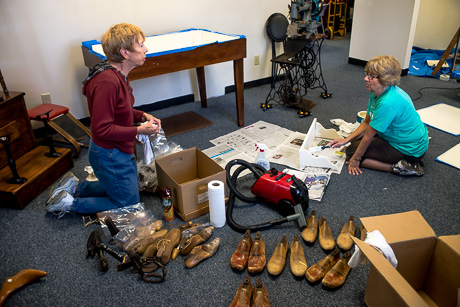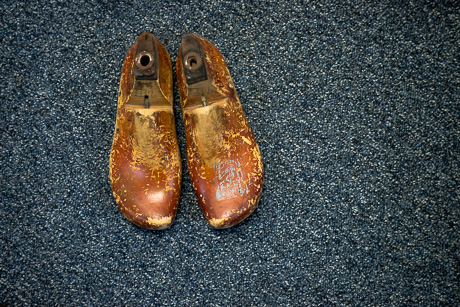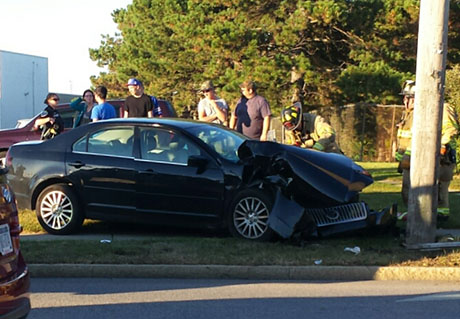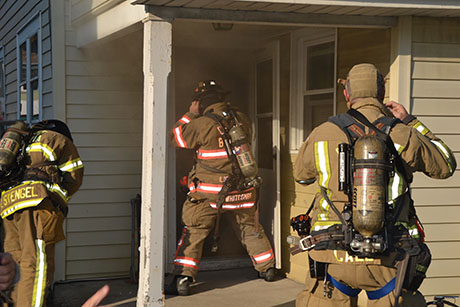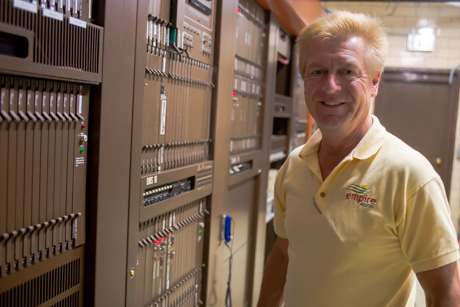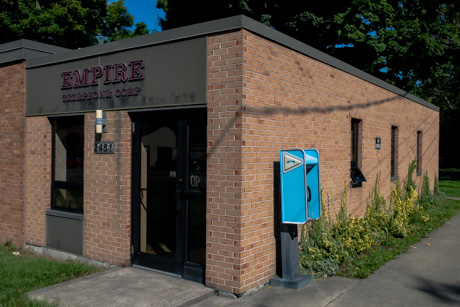Current police headquarters has its problems, but so do available alternatives
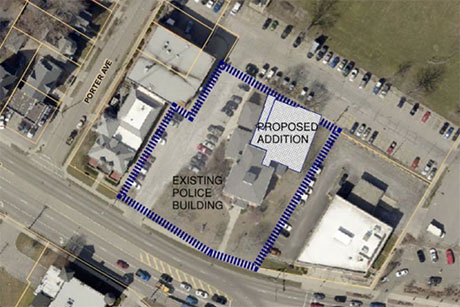
The list of problems with the current Batavia PD headquarters is long, but the price of doing anything about it is huge.
In the best case scenario, the city will need to spend $10 million on a solution.
Unless, of course, the option selected involves putting head in sand and hoping for the best. That option costs next to nothing, unless of course, the city is sued over some of the potential problems with the existing facility, or disaster strikes.
That's the summary of what members of the City Council heard Monday night from a group of consultants hired to create a police facilities feasibility study.
The consultants were Dominic Calgi, Calgi Construction; John Pepper, Rebanks, Pepper, Littlewood Architects; and, John Brice, Geddis Architects.
Their job -- work with city administration on evaluating three possible scenarios:
- Construct a new police headquarters from the ground up;
- Create a new police headquarters using an existing building;
- Renovate the existing headquarters at 10 W. Main St.
Monday, they presented scenarios for three new-build locations, a scenario for constructing a building with some shared space with the Sheriff's Office on Park Road, and two options for renovating 10 W. Main.
The most expensive option was an extensive rehabilitation and renovation of 10 W. Main, which could cost as much as $17 million. For $10 million, it might be possible to build a new headquarters on Park Road, but there are also a lot of unknown variables that could drive the cost up.
The first step in this process, if it moves forward, is for the City Council to appoint a community task force to study the options presented by the consultants and make a recommendation.
City Manager Jason Molino recommended a task force competely devoid of elected officials, city staff members or members of the law enforcement community. Instead, he recommended citizens from each ward, the school district and UMMC. (Clarification: also, business owners.)
His goal, he said, was to keep it non-political and help assure the public that nobody in the city was pushing a specific agenda.
Council members balked at the recommendation and instead appointed a subcommittee to study the proposed make up of the task force and come back to the full council with a recommendation.
The council will discuss the proposal again Oct. 14 and if it decides to move forward with a task force, appoint it at its November business meeting.
That would give the city a month to advertise for participants and recommend a slate of task force members.
What are the problems with the existing headquarters, which is occupying space built in 1855 as a rich family's residence and was later used as City Hall?
- The building entrance is not secure, neither for police nor the public, nor arrestees;
- Interview rooms and holding cells are not isolated nor secure;
- Storage of weapons and gear is insufficient;
- Building egress is inadequate and not code complaint, and egress for patrol cars is insufficient;
- There is no separate entrance for youthful offenders, which violates state code;
- Building is not compliant with the Americans with Disabilities Act, which means even basic improvements such as upgrading the HVAC system can't take place (unless the city wants to ignore the ADA).
- Building infrastructure is outdated and in need of replacement (HVAC, water, plumbing, electricity);
- Hazardous materials exist;
- Installation of modern technology requires major renovation (again, triggering ADA compliance issues).
A renovation of the facility would be expensive, not just because of the remodeling expense, but it would also need to be expanded.
The option that would give the department the most space (top photo), with a garage and sally port for prisoner transport at ground level, would cost from $15 million to $17 million.
A less robust option, with a raised garage and sally port, would cost from $11 million to $12 million. For that price, the city could build at one of four other identified locations.
"When renovating an existing structure, it's never going to be good at meeting program requirements as new construction," Brice said.
During the reconstruction project, the headquarters would need to find a temporary home. One location suggested is the former Robert Morris School.
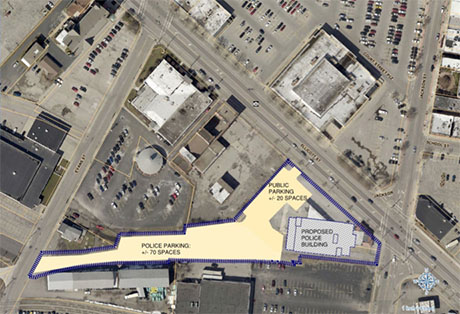
56 Ellicott St.
This location is the former Santy Tire's location with existing businesses still using a portion of the building. Essentially, it's at the corner of Ellicott and Jackson, but the parcel would be expanded to stretch as far back as Evans Street.
Pros for the site include easy access to Downtown and it would be all new construction. The cons include potential environment issues. It's in a flood zone, so the building pad and parking lots would need to be elevated two feet, and it would compete with economic development plans for Ellicott Street.
The potential cost: $11.1 million to $11.9 million.
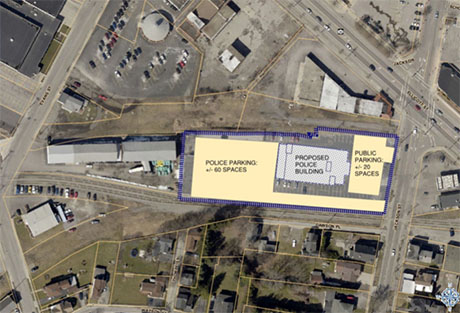
96-98 Jackson St.
The current Salvation Army location.
Pros, again, easy access to Downtown. Cons include the purchase price and existing structure torn down, and it's still in a flood zone.
The potential cost: $11.6 million to $12.5 million
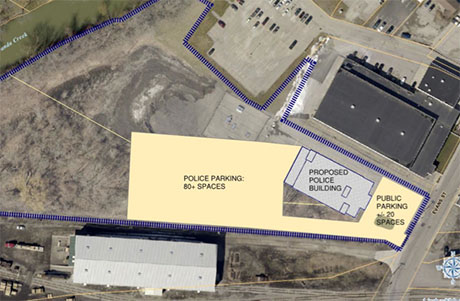
165 Evans St., Batavia
The property is next to Falleti Ice Arena.
Pros include the fact the city already owns much of the property.
The cons include, again, the flood area issue, and it's somewhat of a constricted lot for access. Chief Shawn Heubusch pointed out that it would increase emergency vehicle traffic in front of the ice area and it's somewhat removed from Downtown.
The potential cost: $11.4 million to $12.3 million.
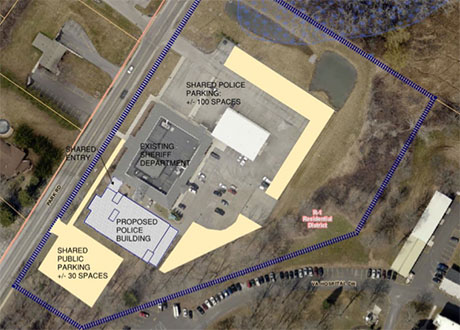
Park Road
City Manager Jason Molino said this option, as part of the study, was looked at very seriously, but the idea isn't without problems.
There is less overlap between police functions with the Sheriff's Office than one might assume. For one thing, since the police patrol the city, Heubusch said, they do their reports and interview subjects at the station; whereas, deputies typically do all of their interviews and paperwork in the field.
The Sheriff's Office doesn't have enough space to share locker rooms, and separate locker rooms would make a shared briefing room less practical. The departments can't share storage because of the need to protect chain-of-custody on criminal evidence.
"It's possible with a lot more thought and investigation between the two units, you could increase the amount of shared space, but it's not built that way now," Brice said. "You might save some space by finding ways to share space, but you wind up renovating more."
The potential cost: $9.9 million to $10.6 million, but maybe more after further study.
For the full study, click here.









